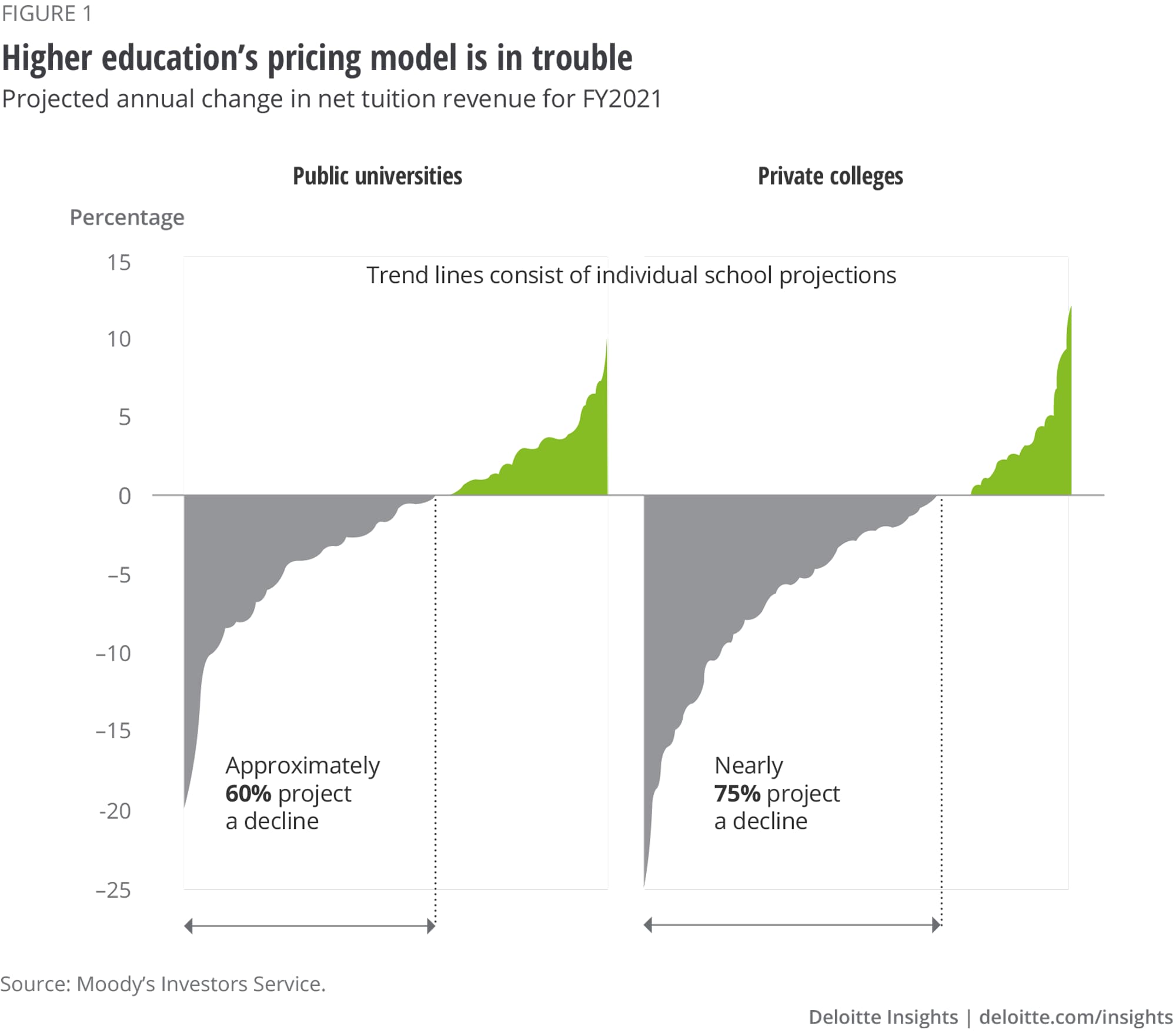Trend No. 3: The business model faces a full-scale transformation
The traditional business model of higher education is broken as institutions can no longer rely on rising tuition among traditional students as the primary driver of revenue.
Colleges and universities were built around the needs and desires of faculty. Academic majors mimicked departments and disciplines; faculty designed the curriculum on their terms and timelines; course catalogs and schedules were dictated by the needs of professors; at many institutions, research was seen as more important than the student experience; and the success of students was often left up to them. That model, which left behind large swaths of adolescents and young adults who never went to college or ended up leaving short of a degree, worked for half a century as demand for higher education continued to grow among the core audience. And while demand will remain for traditional higher education among top-ranked, brand-name institutions, many colleges and universities need a business model that is better aligned to the economic and social realities of the prospective learners that these institutions could serve.
Current models have two fundamental flaws that need to be immediately addressed for institutions to survive and thrive.
First, the cost-value equation is misaligned (figure 1). When institutions set their annual tuition prices, they often look at what they charged last year, the rate of inflation, and what their competitors are charging. Colleges and universities rarely look at what it costs them to offer their education, especially at the academic-program level and the net revenue they’re making on those programs that drive enrollment (or what they’re likely losing on low-demand programs). Without this comprehensive understanding of cost and net revenue, institutions could fail to grasp where strategic cuts can be made without damaging the academic core nor do they know where demand is shifting and how that intersects with what they’re good at or where they need to build institutional muscle by reallocating resources.

Second, the business model has largely been driven to this point by middle-class and affluent, well-prepared high school graduates (of all racial and ethnic backgrounds) whose parents attended college. The kind of students who propelled expansion over the last 20 years will not disappear, but they won’t spur growth either. As Trend no. 1 summarized, finding adult students who have accumulated postsecondary credits but are short of a credential is much more difficult than recruiting high school students into college. What’s more, many adult learners are juggling the demands of work, caregiving responsibilities for children and aging parents, as well as a frayed social safety net that often means a car repair or a sick child derails their progress toward a degree. A recent survey by Gallup and Lumina found that 56% of one-time students who stopped out before the pandemic would be open to reenrolling, but they also cited work and family obligations as huge hurdles to returning to college.1 Many colleges lack the administrative and student structures to reenroll and retain adult learners, putting even more pressure on their business model.
Yet the opportunities for colleges and universities that shift their business model to a more student-centric one, serving the needs of a wider diversity of learners at different stages of their lives and careers, are immense. Politicians and policymakers are looking for solutions to the demographic cliff facing the workforce and the need to upskill and reskill generations of workers in an economy where the half-life of skills is shrinking. This intersection of needs—higher education needs students; the economy needs skilled workers—means that colleges and universities, if they execute on the right set of strategies, could play a critical role in developing the workforce of the future. For many colleges, this shift will require a significant rethinking of mission and structure as many institutions weren’t designed for workforce development and many faculty don’t believe it’s their job to get students a job. But if a set of institutions prove successful on this front, they could in the process improve the public perception of higher education, potentially leading to more political and financial support for growing this evolving business model in the future.
Call to action
Outside of the top tier of institutions, there is a critical need to develop innovative means of delivery that will require institutions to take measured risks and design new operating models and programs. Such models will call on institutions to challenge the “sacred cows” of higher education: reconsidering the ongoing viability of investments in areas such as athletics and research, assessing the use case for alternative models such as credit for prior learning, and considering even the assumption of 120 credits as the basis for a degree. There’s a compelling opportunity for institutions to develop more competitive certifications/short credential programs and lifelong learning opportunities aligned with market needs. Institutions who succeed here will need to bring faculty to the table to redefine “workforce development” to include both the immediate term technical skills employers are seeking as well as the longer term “human skills”—foundational to a liberal arts degree—that employees need to be successful in a rapidly changing skill environment.